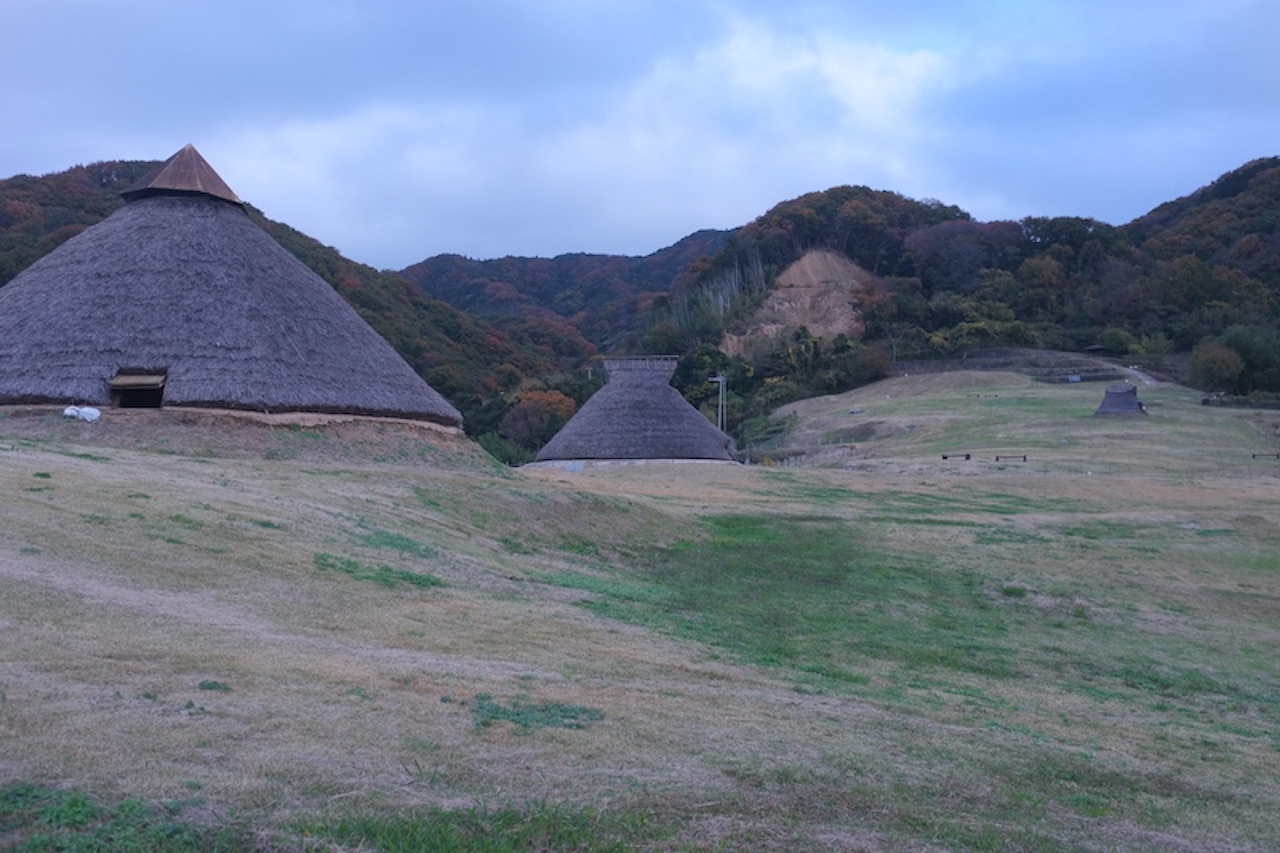
Survival Lessons from a Millennium of History on Awaji Island
One of the most serious issues facing Awaji Island is the aging of residents and dwindling number of young people, a situation which weakens the local economy. In 1955 just after WWII, the island population totaled 210 thousand people with 80 thousand in Awaji City alone. However, now almost 70 years later, Awaji City’s population has fallen by roughly half to 40 thousand. According to research by the Japanese government, the island’s current population of 130 thousand will decrease to 120 thousand in the next 20 years.
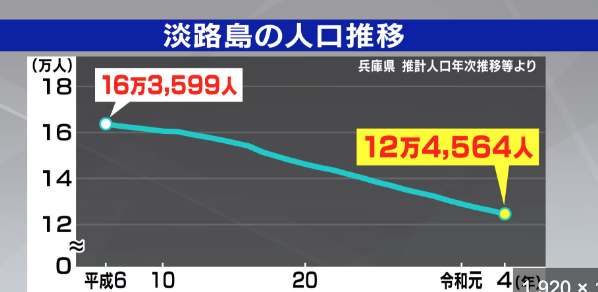

Fig. Population of Awaji Island (Top) and Awaji City (Bottom) (from HP of Awaji City).
Surprisingly however, in 2020, although neighboring municipalities of Sumoto and Minami Awaji continued to decline, Awaji city reported an annual increase of 67 people. In 2022, the trend accelerated with 313 new residents moving to Awaji City. According to news reports, (Kobe Shinbun, March 9th 2023, and Nikkei Shinbun Nov. 15th and 16th) one reason for this small but important trend reversal in Awaji city was related to the activities of PASONA corporation.
Two years ago, PASONA declared their intention to relocate head quarter functions to the Awaji city area to realize the potential for tourism and cultural activity, especially along the island’s west coast in Awaji City. Company members on the island jumped by more than 1000 after the declaration, giving a much needed boost to the local economy, as many company staff moved from Tokyo while new recruits were also hired directly to the island area. Such efforts seem to be paying off and could serve as an example to revitalize the declining local economies and cultural activity recently observed throughout Japan. To put recent developments into context, a look at the island’s illustrious history over the past 1000 years may prove helpful, and provide hints of what is yet to come.
A brief history of Awaji Island:from ancient to medieval times
A wealth of ancient ruins have been found all over Awaji Island. In the flat southern area (Minami Awaji City), traces of rice fields and sea water salt production sites have been discovered. These ruins suggest that agriculture and fishing were already major food sources in the 2nd and 3rd centuries. Beyond the southern plains, 2 large ancient villages have been uncovered along the mountainous spine of the island as well, the Gossakaito and Funaki ruins. Both of these sites show evidence of iron production. At these factories one of the major metal products found is a steel needle for fishing. It is now accepted that ironwork was introduced to Awaji from the region of modern-day Korea. According to “Fudoki,” the ancient official record of regional climate and environment of the Harima area (western Hyogo prefecture), a tribe named “Kaijinzoku” living near the coast of Awaji played an important role in transporting people of Izumo (a large kingdom in modern-day Shimane), from a port in Hyogo to destinations in southern Osaka like Sakai. The Kaijinzoku people sustained themselves on Awaji Island based on such naval and fishing skills.
In the 3rd century, Himiko, an ancient empress of Japan, lived in the southern area of Nara prefecture named Miwa (Makimuku as well) and ruled over all Japan. People in Awaji probably interacted with the subjects of Empress Himiko. In the 5th century, a figure who became known as Emperor Nintoku, stayed at the palace in the southern area of Osaka close to Sakai, where particularly delicious foods from Awaji Island were served to him. In northern Sumoto city a special station was established as a kind of kitchen for Emperor Nintoku named “Naizenji,” which retains the name Naizen even today. These historical records support the view of Awaji as a special area for food production for the nobility of ancient Japan, a designation which became known as “Miketsuno kuni” (special area producing high-quality ingredients including seafood, salt, meat and water).

Fig. Gossakaito ruin: Iron produciton site
Industry of Awaji Island in the early modern and modern times:
In Tokugawa period and early Meiji period production of good quality roof tiles and incense sticks were important industry besides traditional agriculture and fishery. During the westernization of Japan in the early Meiji period, a new textile factory was invited from Osaka to Sumoto in Year 1900. It is Kanebou textile company and was in full operation up to 1986 for more than 80 years. Along with the modernization of the island a rail road was founded in 1915 between Sumoto and Yura, the south entrance of the island bound for Tokushima. But it was discontinued in 1966 because of advance in motorization. During the rapid economic growth of Showa period, SANYO electric company operated their central factory at Awaji Island and created a large number of jobs. The company continued up to the merger with PANASONIC corporation in 2011, which is a symbolic event of the change of major industrial trend in Japan.
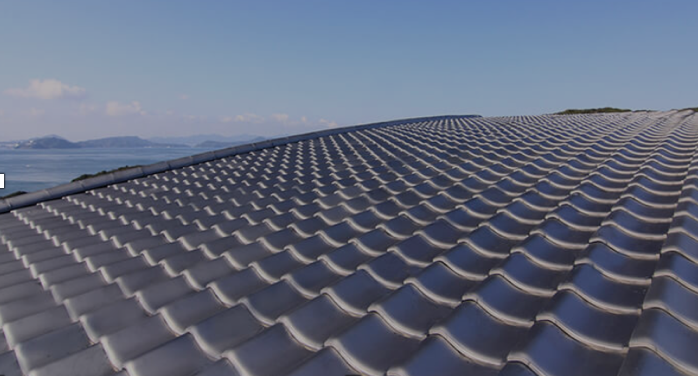

Fig. Roof tiles and Incense sticks were major products besides rice and salts.
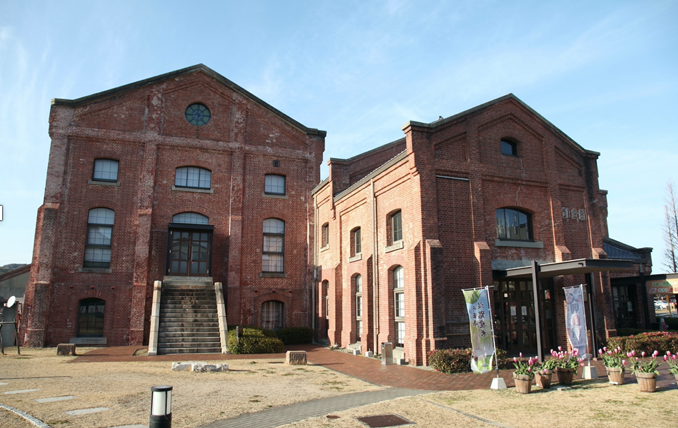
Fig. Memorial site in Sumoto of Kanebo textile factory established 120 years ago.
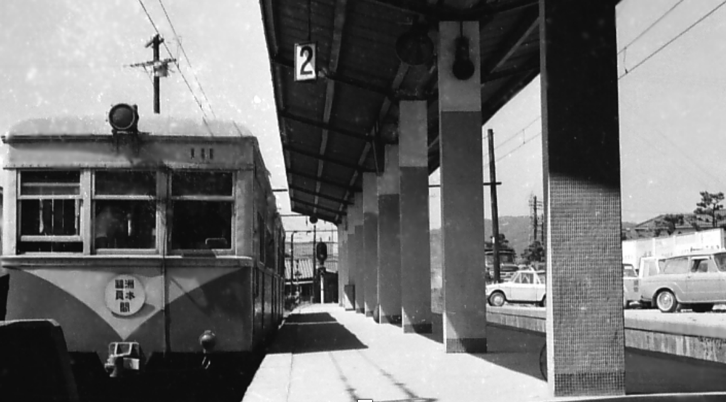
Fig. Electric train between Sumoto and Fukura, conducted up to 1966.

Fig. Still agriculture is a main industry on the island.
What is the future of industry on Awaji Island?
As reported in the New Topic corner of this HP (Aug. 27th , 2021) feelings of well-being differ significantly depending on where people live in Japan. Prof. Managi and his colleagues at Kyushu University reported this based on their research. One of their conclusions was that feelings of well-being are highly dependent on income level and population levels in certain areas. A reasonable income from steady employment seems essential for well-being. In Awaji as we have found, lifestyles have depended on political situations, and industry has changed almost once every 50 to 100 years.
What will support the well-being in Awaji Island from now? The industry that appeared in the Showa period seems less active today due to the development of China and emerging IT trends. What is the future of industry on Awaji Island? Traditional agriculture and fishing remain an essential source of income for many residents. These industries, along with traditional and modern cultural trends, are vital to preserve the natural beauty and biodiversity of the island which, in turn, has come to support a new wave of tourism (see the corner in this HP, “Enjoyable places and future oriented site” ).
Reference; Revised Awajishima dokuhon (A guide for Awaji Island), Awajishima dokuhon edtiting committee, Tohru Hirooka, edit. Fumiko Nageishi (in Japanese).
